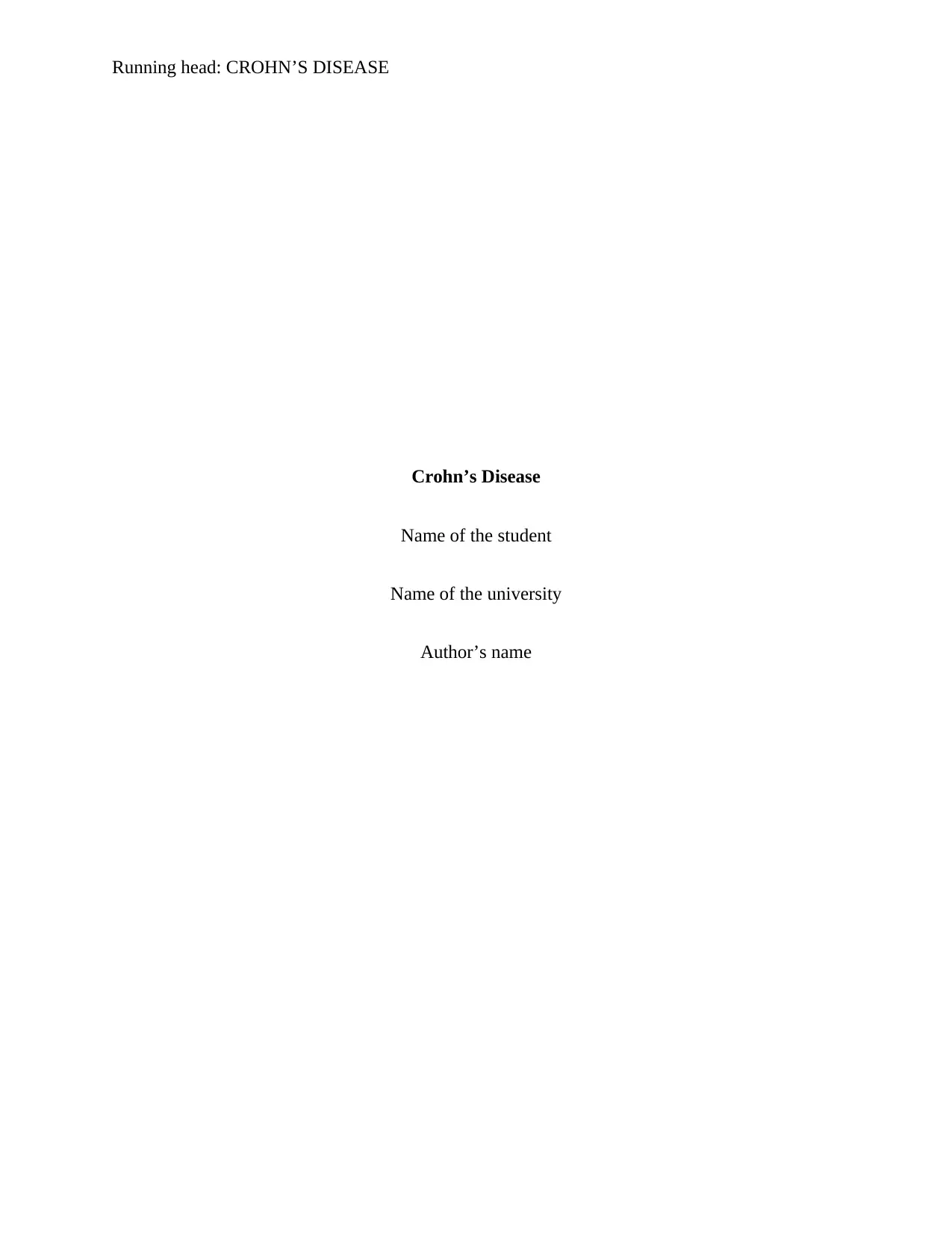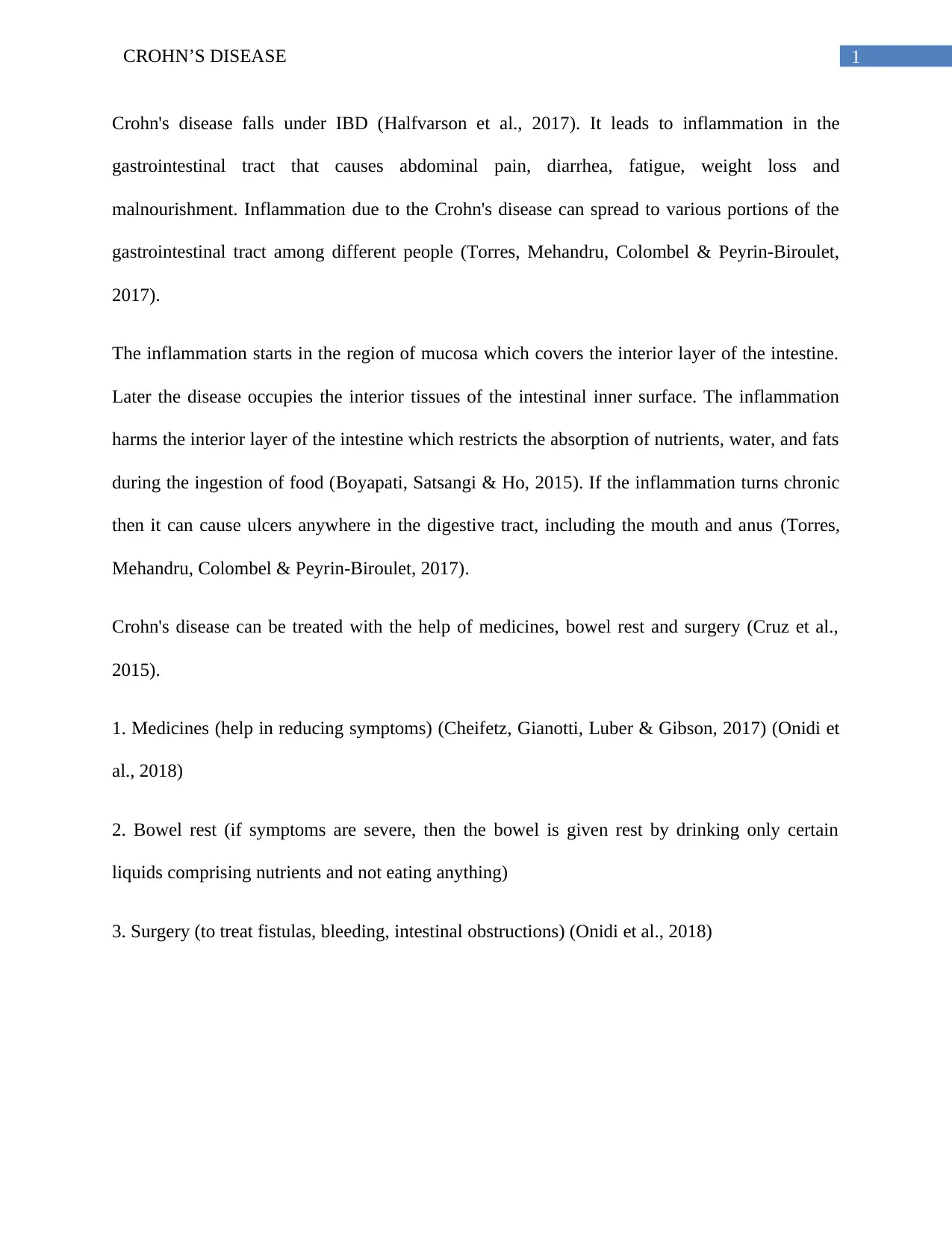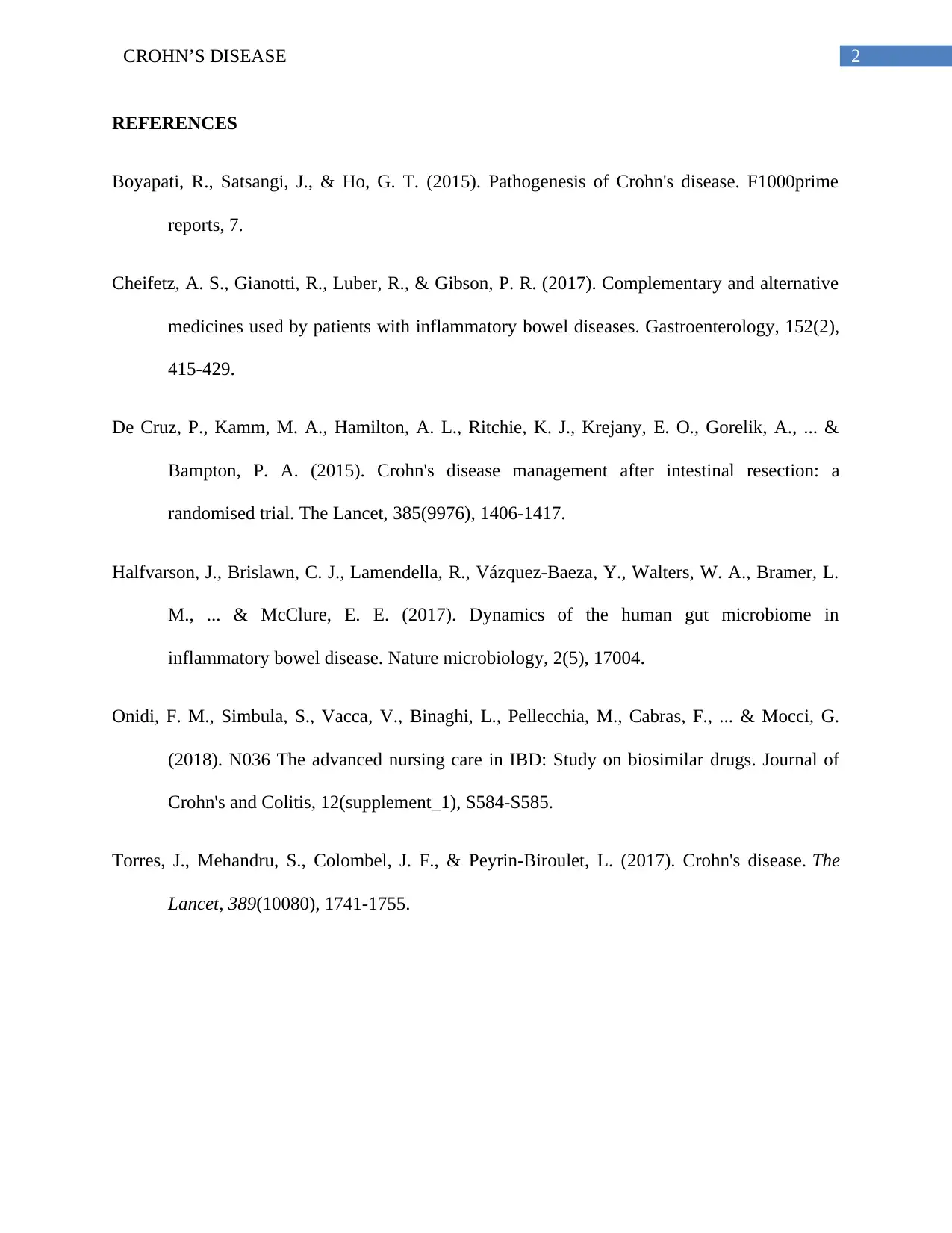Active Learning Template Assignment: Crohn's Disease Analysis, Nursing
VerifiedAdded on 2022/11/04
|3
|585
|102
Homework Assignment
AI Summary
This assignment delves into Crohn's disease, an inflammatory bowel disease (IBD) characterized by inflammation of the gastrointestinal tract, leading to symptoms like abdominal pain, diarrhea, fatigue, and weight loss. The analysis encompasses the disease's pathophysiology, including the inflammation process that can affect various parts of the digestive system, starting from the mucosa and potentially damaging the intestinal lining, hindering nutrient absorption. The assignment also provides an overview of the available treatments, which include medications to alleviate symptoms, bowel rest to give the digestive system a break, and surgical interventions to address complications such as fistulas or obstructions. The document also includes references to relevant research papers and studies.
1 out of 3







![[object Object]](/_next/static/media/star-bottom.7253800d.svg)